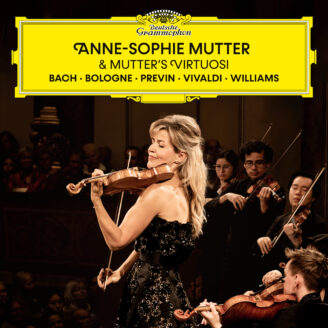Since then,” she says, “Mozart has always been present on a daily basis in my life: I’ve never stopped thinking about him, and I’ve always been trying out new ways to get closer to him. He’s the composer I have grown up with, who was always there waiting for me at every juncture of my career.”
Though she has already recorded several of the works to be included in the project, she emphasises the fact that both she and her perceptions of Mozart have changed with the years. “What comes out when you are twelve years old does so purely by instinct, and if you continue to be guided by instinct it’s not enough – you just repeat yourself” she says. “You can only grow artistically if instinct is combined with a curious mind.” But she stresses that this project will in no way claim to be definitive: “I hope there will be some positive surprises for the listener, but these recordings are not intended to displace those that already exist. This project is a celebration of Mozart and a deep bow to his genius.”
Nor does she claim to usurp the role of conductors. “I’ve never studied conducting technique as such. But I am a leader – partly because it’s my character, and partly because I know precisely what I want from the score, and know how to convince an orchestra of my viewpoint. Mozart himself was not a conductor, and in a humbler way I am trying to emulate him as primus inter pares.” Though she has already led the Wiener Philharmoniker in the concertos, she regards her choice of the LPO for the recordings as crucial: “Some orchestras sound velvety, but the LPO are more like a Porsche – vibrant and youthful, and they can pull off anything. Their Mozart is fast, not in terms of tempi, but in reaction-time. It’s chamber music without leaning back.”
Playing Mozart, she says, is much more than a matter of playing him “beautifully”. It’s very much about bowing, and about the spaces between the notes. “With Mozart every note is precious, and has to be thought about – particularly as the orchestration leaves you so painfully exposed. The orchestration in the Romantic repertoire creates a seductive backdrop for you. But with Mozart every instrument has to be there at the right moment, and in the right taste and shape and tempo – and that demands high mastery from everybody. Maybe this daunting knowledge is what has prevented me from re-recording him sooner.” On the other hand, she regards much Mozart-playing as misconceived: “The approach these days is either over-virtuosic, and lacks elegance and purity and modesty – Tchaikovsky’s description of Mozart’s music as ‘angelic’ is exact. Mozart’s music is like an X-ray of your soul – it shows what is there, and what isn’t!”
She is careful to distance herself from any notion of “authentic” period performance, which she regards as an impossibility. “We hear differently from the way Mozart’s contemporaries did. And we can’t pretend to be able to go back to hearing as they did 250 years ago. We are used to different concepts of beauty and style: we expect things to be richer in texture.” She doesn’t use gut strings: she’s a strong defender of the modern stringing of the violin, because it expands its capacity, not only for volume, but also for colour and shading. “And those things are an integral part of Mozart’s compositional style, and part of what he loved in music making.”
The trios she has chosen to record are – unashamedly – the ones which give the violin most to say: these works, she says, show Mozart writing for pure enjoyment, also for his own as he played them quite often. The concertos represent in her view an astonishingly rapid explosion of the composer’s genius, over a very short space of time; the sonatas show him steadily emancipating the violin from its subservient 18th century role as an accompanying instrument.
July 2005

